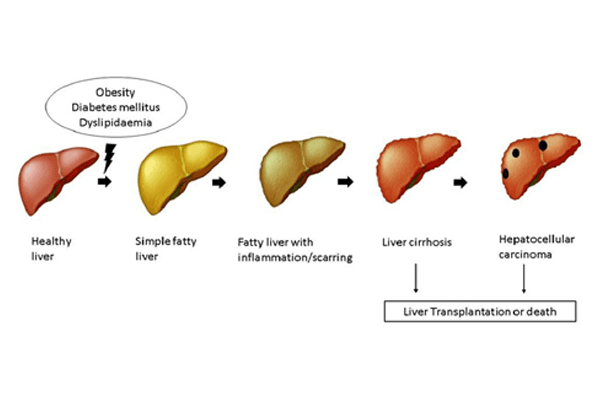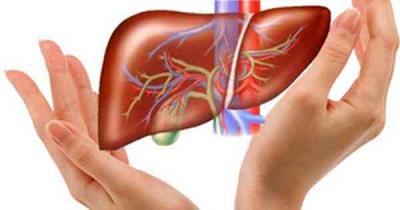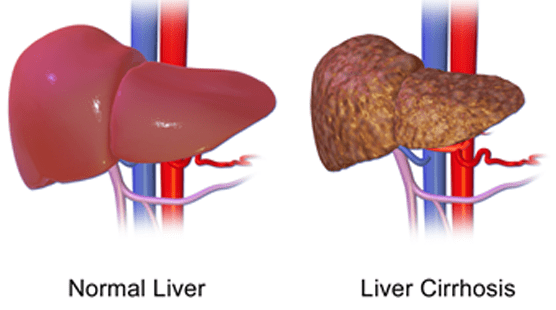Alcohol and NAFLD
The occurrence of nonalcoholic fatty liver illness (NAFLD) is assessed to be 26.3% in general population. The development of this liver disease shows an aggressive jump to nonalcoholic steatohepatitis (NASH) with stage 2 fibrosis, which may advance to cirrhosis. The meaning of NAFLD discards the consumption of excessive alcohol, which is notable to cause alcoholic liver infection and doesn’t associate itself with alcohol consumption.
Most NAFLD clinical preliminaries use 14 drinks every week as the cut-off for over the top liquor consumption. Liquor utilization below this limit, which we characterize as moderate alcohol consumption, is considered as regular. With NAFLD, it is commonly noticed that there is a negative relationship between alcohol consumption and NAFLD. Similarly, there can be many depending factors, in light of the fact that an excessive amount of alcohol consumption is additionally connected with some NAFLD risk factors, and those hazard factors may not be sufficiently recorded in examinations. The occurrence of NASH with critical fibrosis is increasingly significant keeping in mind the fact that this is the group that is believed to have and develop progressive liver diseases. In this way, similar infections from a developing liver disease are important from the patient’s point of view. Since these patients have just evolved from the disease of NAFLD or NASH, their chances of liver disease lies in their progression of diseases depending on that fact that they have moderate alcohol consumption as compared to non-alcoholics.
It is likewise significant that cardiovascular diseases are the most significant reason for death among patients with NAFLD. Moderate alcohol consumption has been related with a decrease in generally recorded deaths, however mostly in the case of cardiovascular diseases leading to deaths. In any case, this defensive impact has not been exhibited explicitly in patients with NAFLD.
 Nonalcoholic fatty liver disease refers to the umbrella term that consists of liver ailments. As the name goes, NAFLD (Nonalcoholic fatty liver disease) refers to fatty liver resulting from alcohol consumption or obesity. Many other factors contribute to the development of the liver fat. Nonalcoholic steatohepatitis (NASH) can happen at a later stage of NAFLD, whose characteristics are inflammation in the liver and liver scaring and in worst cases, cirrhosis and liver cancer.
Nonalcoholic fatty liver disease refers to the umbrella term that consists of liver ailments. As the name goes, NAFLD (Nonalcoholic fatty liver disease) refers to fatty liver resulting from alcohol consumption or obesity. Many other factors contribute to the development of the liver fat. Nonalcoholic steatohepatitis (NASH) can happen at a later stage of NAFLD, whose characteristics are inflammation in the liver and liver scaring and in worst cases, cirrhosis and liver cancer.
We can identify the disease with some of the below symptoms –
- Fatigue – weakness or lethargy
- Chronic pain in the abdominal area – pain in the abdominal area due to fat in liver
- Enlarged spleen – an enlarged spleen due to fat in liver
- Red palms – redness around the palms and hands
- Yellowing of the skin and eyes – most common symptoms is yellowing of the skin and eyes.
Although it is commonly considered that fatty liver occurs due to alcohol consumption, the surprising fact is that there are more to the disease than we can think. Among the factors which lead to the development of fatty liver disease are – obesity, insulin resistance, improper food habits, high blood sugar (hyperglycaemia) indicating type 2 diabetes and also high level of fat in the blood.
Blood lipids – ‘Blood lipids’ is a term used for all the fatty substances found in the blood. Cholesterol and triglycerides can be tagged as blood lipids. People having too much cholesterol in their blood are at high risk of heart diseases.
Cholesterol, the fatty substances which are mainly made in the body when the liver breaks down saturated fats in food.
Triglycerides are another type of fat found in the blood which are contributed by food items. Drinking too much alcohol, sugary drinks or eating too much fat-based foods or meat can cause calories to settle down on the body and the lover breaks down the fat into triglycerides which are stored in our body as fat and used as energy.
Overview
 The life span of an individual with alcoholic liver disease diminishes significantly as the condition advances. By and large, one out of three individuals with the most exceptional phase of liver illness and cirrhosis are as yet alive after 2 years. At the point when the body can fight and manage cirrhosis, the normal life expectancy is 6 to 12 years. Those with less serious infection will endure longer, as long as they keep up with the abstinence from alcohol.
The life span of an individual with alcoholic liver disease diminishes significantly as the condition advances. By and large, one out of three individuals with the most exceptional phase of liver illness and cirrhosis are as yet alive after 2 years. At the point when the body can fight and manage cirrhosis, the normal life expectancy is 6 to 12 years. Those with less serious infection will endure longer, as long as they keep up with the abstinence from alcohol.
A few phases of the condition can be reversed, and life span can increase once an individual quits drinking liquor totally. Not smoking, controlling body weight, and overseeing diabetes just as any heart, kidney, or lung infections are additionally significant in extending and improving personal quality of life.
Consuming alcohol and its effects on our lives
Today, a lot of people have become dependent on alcohol. For some it is all about enjoyment and for some it is a habit. While certain of amounts of alcohol is healthy for the human body, anything excess can affect the functioning of certain organs. The liver definitely is that one organ that does face the consequences of excessive alcohol consumption. What people need to understand is that while alcohol does affect the body positively in lesser amounts, making it a habit and becoming a person who excessively drinks, can pose a huge problem. Let’s understand how alcohol works and its implications on the human body.

How long does alcohol stay in the human body?
You must have heard and experienced that you are not supposed to consume alcohol if you have to go for certain medical tests, are pregnant or if you are under medication. This is because alcohol can pose certain risks in case of breastfeeding and medication and when it comes to medical tests it causes inaccuracy in the results. It is therefore very vital to understand how long alcohol stays in the body. Typically, alcohol is detected up to 48 hours in the urine, 24 hours in one’s breath and 90 days in the hair!
Does alcohol thin your blood?
Yes, alcohol does indeed thin the blood. It prevents blood cells from getting stuck together and forming clots which may decrease the perils of getting a stroke that is caused by blockages in the blood vessels.
Due to this effect, drinking alcohol may increase the risk for the bleeding type of strokes especially when it is consumed in large quantities. What does large quantities mean? For men it’s more than 2 drinks a day and for women it’s more than 1 drink a day. In general, alcohol use in general can have various other health implications too.
So the question arises as to how does alcohol thin the blood? During an injury, the platelets reach the injury site quickly. The cells being sticky clump together. These platelets release proteins known as clotting factors which go on to forming a plug that closes the hole. In fact, clotting comes with its benefits a person faces injury. In some cases, a blood clot can form in or move to an artery that
supplies the heart / brain with blood that is rich in oxygen. Thrombosis is the scientific term for clotting of the blood. If a blood clot flows to the heart, it could become a cause for inducing a heart attack. And in case of the brain, the blockage can cause a stroke.
Here is how alcohol interferes with the clotting process in a couple of ways:
– Alcohol reduces the number of platelets in the blood in a way by meddling with blood cell production in the bone marrow.
– The existing platelets become less sticky.
It is known that consuming a glass or two of wine every day may reduce the risk for heart disease and strokes caused by blockages in blood vessels just as an aspirin taken daily works by preventing strokes. But, one needs to be careful as having more than 3 drinks a day can increase a person’s risk for a type of stroke caused by bleeding in the brain also known as hemorrhagic strokes.

Does alcohol affect a person’s sperm count?
Excessive consumption of alcohol can definitely affect the sperm. Occasionally having a drink or two is unlikely to create any problems where fertility is concerned. But drinking more than the recommended quantities can lead to reduction in sperm quality, lower testosterone production, and it also makes it harder to achieve an erection.
Ultimately it can cause liver damage too which has a direct effect on the reproductive health of a person.
It is not known how much alcohol will impact your fertility, so consuming alcohol in moderation is what needs to be kept in mind. In fact it is recommended that men should avoid alcohol consumption at least 3 months before trying for a baby.
Alcohol effects on liver and its symptoms
As we already know, alcohol consumed in excess causes damage to the liver. The liver’s most crucial job is to break down all toxic substances including alcohol. Various enzymes work together to get rid of the alcohol that you have consumed. It is when the liver encounters excessive amounts of alcohol, it causes liver damage as the liver becomes incapable of carrying out the job effectively. First, only the fat content increases in the liver and with time, it can cause inflammation and even scarring of the liver. Scarring of the liver is dangerous as there is no coming back from that.
There are practically no such symptoms that will tell you if you have a liver problem or not. The symptoms are similar to that of other illnesses. Some people experience some of the following symptoms though, which include: –
Swelling of your liver, which leads to lots of discomfort in the upper right side of the abdomen
– Fatigue
– Unexplained weight loss
– Loss of appetite
– Nausea and vomiting
 These early signs of liver damage from alcohol need to be closely monitored and treated. If it is not treated in time, it could progress to bigger problems like cirrhosis and even liver cancer. Though most people do not advance to the later stage, the ones who do have a tough time as these damages are irreversible. If treated on time by making the right lifestyle changes, then early signs of liver damage can be reversed easily. But, one needs to be consistent and would also need to continue to lead a healthy lifestyle.
These early signs of liver damage from alcohol need to be closely monitored and treated. If it is not treated in time, it could progress to bigger problems like cirrhosis and even liver cancer. Though most people do not advance to the later stage, the ones who do have a tough time as these damages are irreversible. If treated on time by making the right lifestyle changes, then early signs of liver damage can be reversed easily. But, one needs to be consistent and would also need to continue to lead a healthy lifestyle.
In conclusion, alcohol when consumed in moderation comes with certain benefits and almost no harm. But, when consumed in large quantities, it can make life very difficult. It is therefore advised to not make it a habit. Dependency can be cruel to your body. Seek help from a medical professional in case you are facing an alcohol problem. At the end of the day, all we went is to lead a healthy and happy life.
Content source:
https://www.healthline.com/health/how-long-does-alcohol-stay-in-your-system#urine-vs-breath-test
https://www.healthline.com/health/does-alcohol-thin-your-blood#why-it-happens
https://www.healthymale.org.au/mens-health/sperm-health#:~:text=Having%20the%20occasional%20alcoholic%20drink,your%20general%20and%20reproductive%20health.
https://www.healthline.com/health/early-signs-of-liver-damage-from-alcohol#early-signs



 The life span of an individual with alcoholic liver disease diminishes significantly as the condition advances. By and large, one out of three individuals with the most exceptional phase of liver illness and cirrhosis are as yet alive after 2 years. At the point when the body can fight and manage cirrhosis, the normal life expectancy is 6 to 12 years. Those with less serious infection will endure longer, as long as they keep up with the abstinence from alcohol.
The life span of an individual with alcoholic liver disease diminishes significantly as the condition advances. By and large, one out of three individuals with the most exceptional phase of liver illness and cirrhosis are as yet alive after 2 years. At the point when the body can fight and manage cirrhosis, the normal life expectancy is 6 to 12 years. Those with less serious infection will endure longer, as long as they keep up with the abstinence from alcohol.

 These early
These early